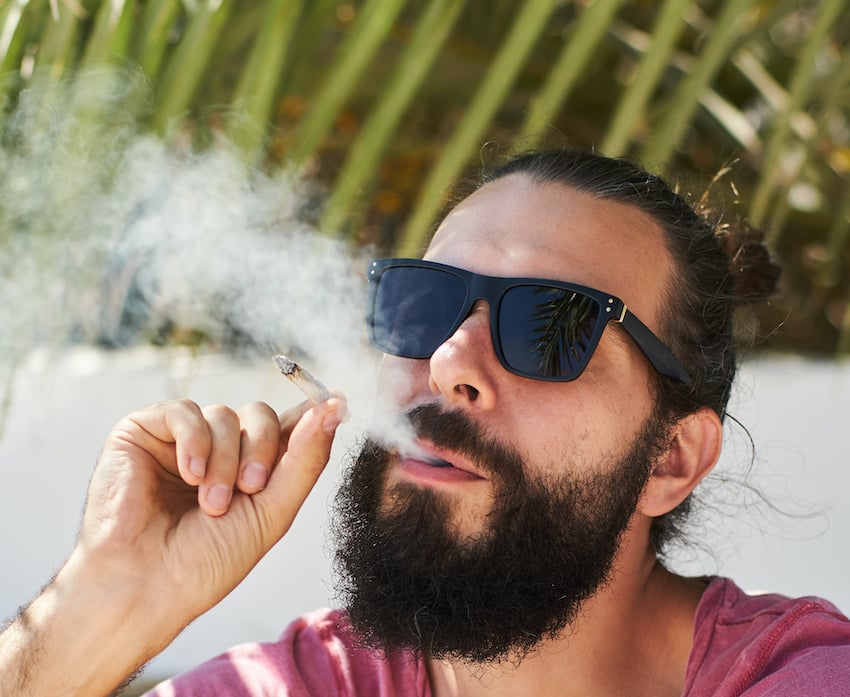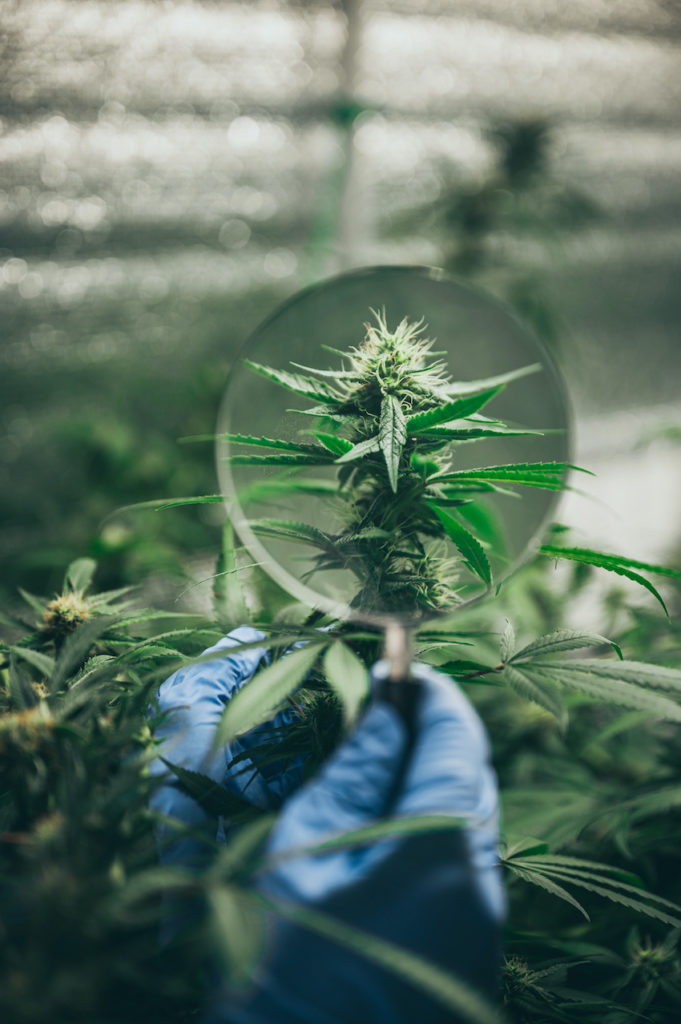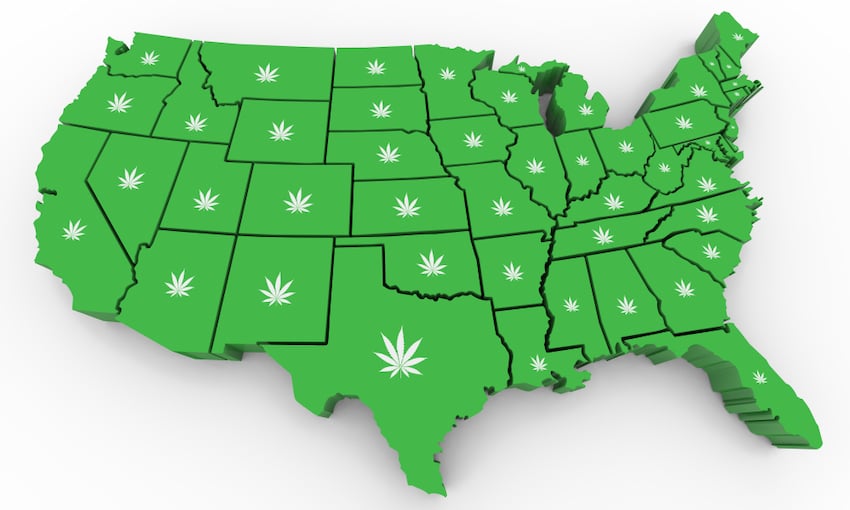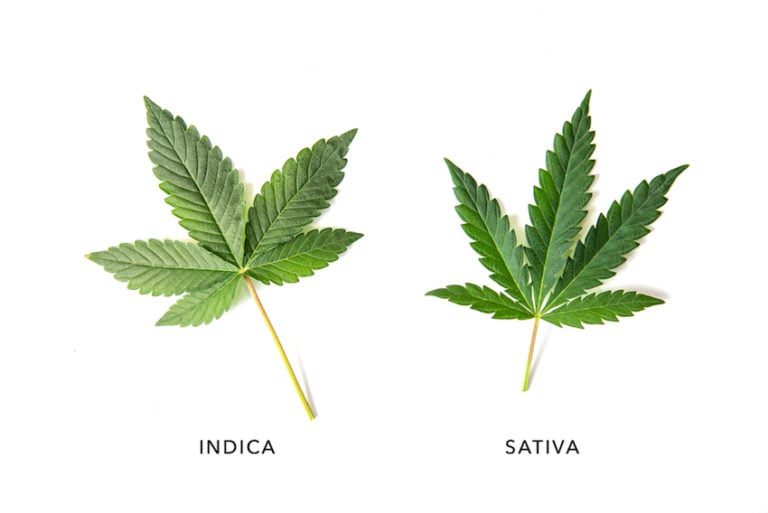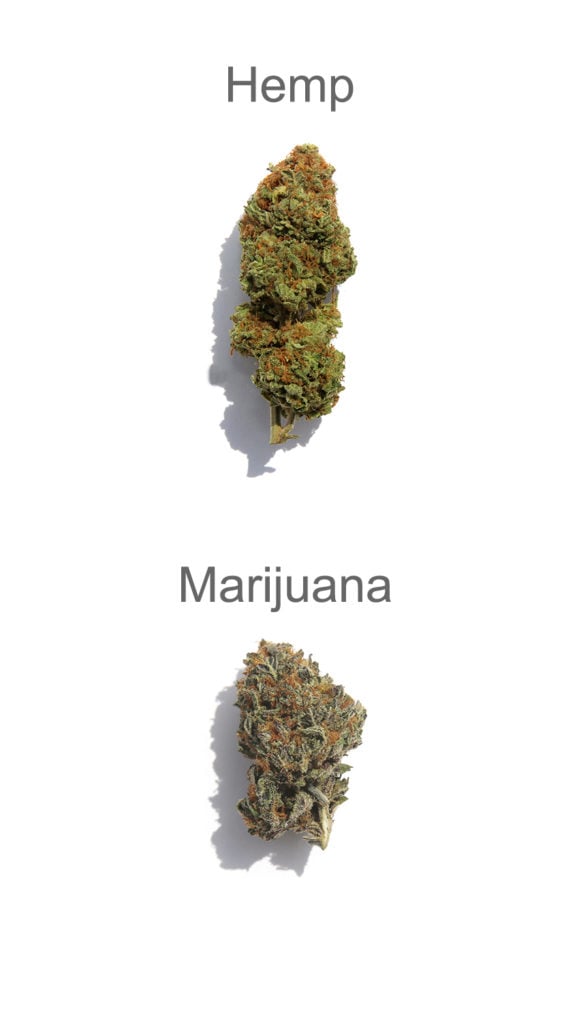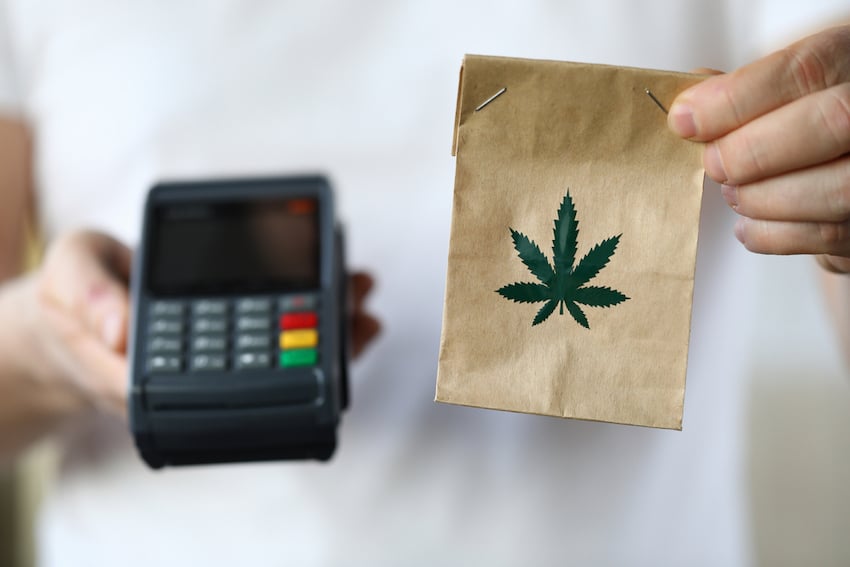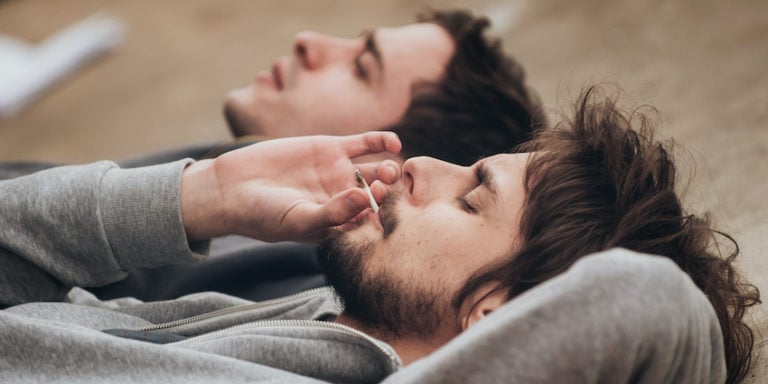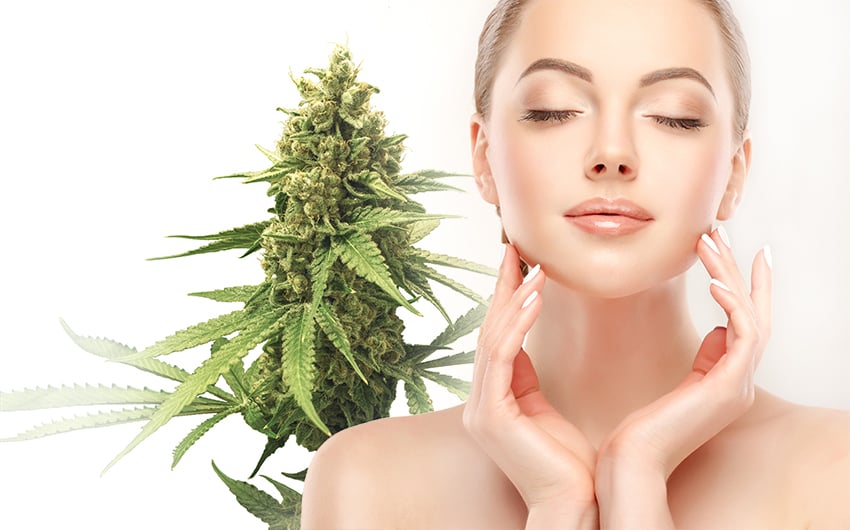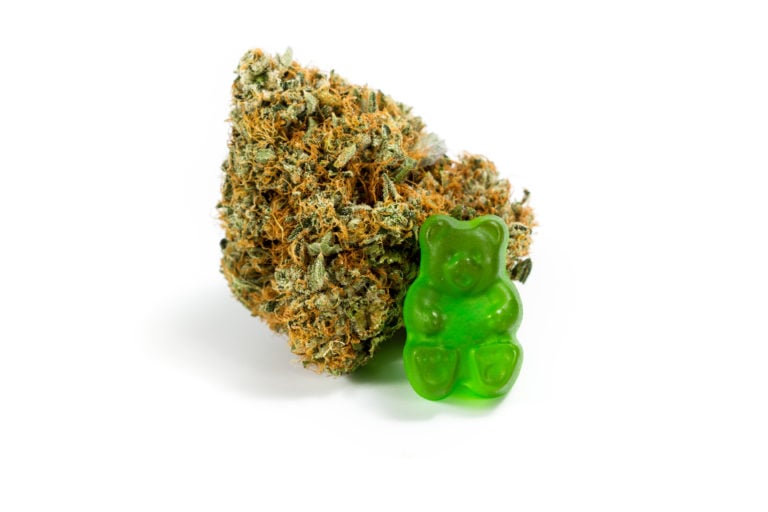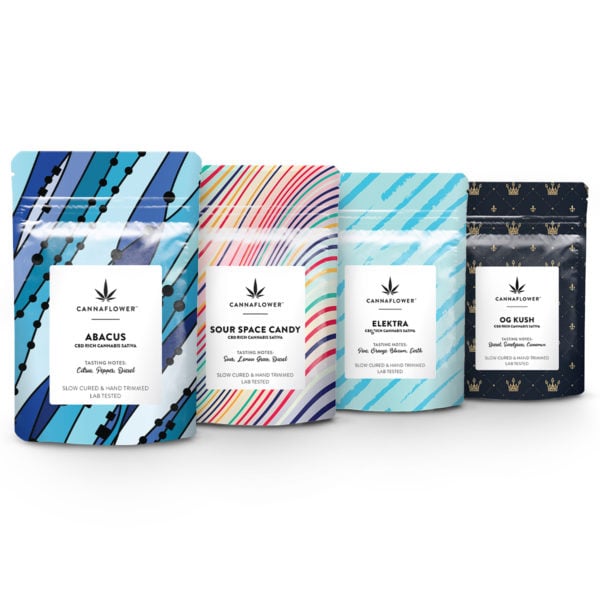There’s a ton of excitement surrounding CBD—but there’s also a lot of confusion. For instance, many customers aren’t sure whether hemp CBD is the same as cannabis CBD. While this issue might not seem terribly important, it could have a significant impact on your CBD experience. Indeed, some cannabis products labeled “CBD” could be federally illegal.
New CBD customers should take a few moments to review the basics of the hemp vs. cannabis distinction. Knowing where your CBD came from will help you make an informed purchase.
First Off, What Is CBD?
Before we dive into the distinctions between hemp CBD vs. cannabis CBD, it’s worthwhile reviewing what the heck CBD is. Short for cannabidiol, CBD is one of the primary phytocannabinoids found in the cannabis plant. Unlike another cannabinoid called THC, CBD has no psychoactive properties. In other words, CBD won’t make you feel “high.”
But just because CBD doesn’t have psychoactive effects associated with tetrahydrocannabinol doesn’t mean it’s inert. Indeed, some of the brightest minds in science & medicine are researching CBD’s many potential uses in well-being. Plus, since CBD was deemed legal in the federal level by the 2018 US Farm Bill, more customers are interested in this cannabinoid’s effects.
If you’d like a more in-depth explanation of how CBD differs from THC, we encourage you to read through our previous blog post.
Cannabis vs. Hemp – What Are The Key Differences?
Although this might sound strange to new consumers, there’s technically no difference between “cannabis” and “hemp.” In fact, hemp is a subgroup within the cannabis genus. To make matters more complicated, “marijuana” is an entirely different cannabis variant.
So, if we’re being precise, the only distinction CBD customers of hemp products should keep in mind is between “marijuana” and “hemp.” Unfortunately, many manufacturers conflate the terms “cannabis” and “marijuana,” which means customers have to do a bit of digging to find out where their CBD came from.
It might seem like we’re splitting hairs here, but there are big differences between hemp and marijuana-derived goods. Here are a few of the most prominent features you need to keep in mind.
CBD-to-THC Cannabinoid Content
The most significant difference between hemp and marijuana has to do with their cannabinoid levels. Put simply: hemp has naturally high CBD and low THC percentages, but marijuana always has well above 0.3 percent THC.
Indeed, for most of recent history, cultivators bred marijuana plants to have the highest THC concentrations imaginable. Today, it’s not unheard of to find marijuana hybrids with a THC content between 25 – 30 percent.
Even though CBD levels tend to be lower in marijuana, that doesn’t mean they’re non-existent. Due to the recent boom in the CBD industry, many cultivators are busily breeding unique high-CBD cultivars. Since some manufacturers extract their CBD from marijuana buds, it’s crucial for customers to carefully inspect lab studies associated with their product.
What’s The Legal Status Of Hemp vs. Marijuana?
As of 2018, the US Federal Government formally legalized hemp-derived CBD products for sale and use. However, that doesn’t mean all hemp goods are OK as is. Indeed, the government makes it crystal clear that legal hemp must contain ≤ 0.3 percent THC.
Marijuana, on the other hand, remains a Schedule I drug under federal law. That means any product with above 0.3 percent THC is technically illegal in the USA.
Of course, cannabis laws are constantly changing from state-to-state. Some territories now allow recreational marijuana, while others have firm bans on the sale of CBD oil. Because cannabis legality is in a state of flux, customers should check their local government’s cannabis statutes before purchasing any hemp-derived products.
Does Hemp Have Different Effects vs. Marijuana?
Since hemp-derived CBD can’t have more than trace amounts (0.3 percent levels of THC), users don’t need to worry about psychedelic effects. Indeed, many people who take CBD describe the experience as “calming” and “clear-headed.” Some CBD users also report mildly sedating effects to the human body.
By contrast, marijuana strains often contain significant traces of the psychoactive cannabinoid THC. Even mild traces of THC will induce a “stoned” sensation, but the quality of this “high” largely depends on what strain people are smoking.
Not to get too “into the weeds,” but marijuana traditionally falls into one of two categories: indica or cannabis sativa. Generally, strains that lean on the indica side give users a sedating high, while those on the cannabis sativa plant are more energizing. This indica-to-sativa distinction also exists in different hemp cultivars, but the effects are milder than high-THC marijuana.
Although CBD is generally well-tolerated, it is possible to experience side effects like nausea, headaches, or rashes at higher doses. Side effects commonly associated with marijuana include appetite stimulation, red eyes, and a scratchy throat. At higher doses, marijuana could also induce severe side effects like paranoia, especially if users are prone to anxiety.
What Are The Uses Of Hemp vs. Marijuana
Another distinguishing feature between hemp and marijuana has to do with their uses. Or perhaps we should say marijuana’s relative lack of utility.
You see, growers have been cultivating hemp for centuries primarily for industrial purposes. The hemp plant’s fibrous stalks provided excellent material for early textiles, including clothing, sails, and ropes. There’s also evidence industrial hemp was used for centuries in early forms of pottery and paper.
Although many farms now cultivate hemp for CBD extraction, it’s essential to recognize this plant has many innovative industrial applications. By contrast, people have only bred marijuana for one purpose: consumption.
Does Hemp Look Different From Marijuana?
We’ll admit: it’s tricky to tell the difference between a marijuana and hemp plant.
Indeed, depending on what strain you’re dealing with, you might have to send buds for lab verification to figure out whether you’re dealing with hemp or marijuana.
A few of the defining features of hemp plants include a lanky appearance, tall height, and thin fan leaves. All of these traits are remarkably similar to sativa-heavy marijuana strains.
However, indica marijuana strains tend to have a short, shrub-like appearance, making them easier to distinguish from hemp.
While these differences might be necessary for cultivators to know, it’s not the easiest way for average CBD consumers to distinguish hemp from marijuana.
What Could Hemp Be Used For?
When you think of “ancient agriculture,” you probably picture grains like wheat or barley. While these crops undoubtedly played a crucial part in our ancestors’ lives, historians often note the central role of hemp farming in many of the world’s greatest cultures.
Amazingly, recent research suggests people in the Middle East have been cultivating hemp for cloth since 8000 BC. The Ancient Chinese also grew extensive hemp fields primarily for textiles, and ancient texts describe using hemp seeds for various medical conditions.
But that doesn’t mean hemp was a uniquely Eastern phenomenon. Interestingly, many of the great European ships during the “Age of Discovery” had sails made from hemp. There are also countless famous documents—including the Declaration of Independence—first printed on hemp paper.
In addition to CBD’s use in textiles, paper, and pottery, here are a few of the other potential uses of industrial hemp:
- Biofuel
- Cosmetics
- Plastic containers
- Concrete alternative
It’s only recently that hemp has been cultivated primarily for its high concentration of CBD. Unlike industrial hemp, high-CBD hemp can only be grown from feminized seeds and requires more time, space, and attention to detail. For the best smokable CBD experience, be sure to go with a company that focuses on growing trichome-rich hemp flowers rather than industrial hemp biomass.
If you’re interested in learning more details about hemp’s history of industrial use, please read through this previous post.
What Is CBD Used For?
Despite hemp’s many industrial uses, most contemporary consumers know about this plant for its high CBD content. There are many rumors online surrounding what CBD can and can’t do, but there’s no doubt this cannabinoid is a hot item in the health & wellness space.
While we can’t say anything conclusive about CBD’s benefits, we could share a few of the most common reasons customers choose to buy CBD.
Keeping The World Chill — CBD’s Anxiolytic Potential
Arguably, the most common reason people try CBD is to help with anxiety-related issues. Some customers claim a daily dose of CBD has subtle effects that melt away day-to-day stress.
Currently, researchers are most interested in CBD’s supposed ability to help manage social phobia. Interestingly, one study out of Brazil suggested CBD performed better than a placebo when administered to a group of social anxiety patients. Japanese researchers also suggested CBD might have a more substantial anti-anxiety effect versus a placebo pill.
Again, there’s no conclusive evidence CBD could help curb anxiety, but it’s certainly one of this cannabinoid’s major selling points.
Sleepy Time — CBD As A Sedative
Since CBD shows promise as an all-natural anxiolytic, it makes sense that people with sleep disorders are getting interested in this cannabinoid. Indeed, many insomnia patients now use CBD products to help unwind before going to bed.
We don’t have a ton of hard evidence to support CBD’s use before bedtime, but one study out of the University of Colorado shows excellent promise. In this study, anxiety patients were given CBD pills and monitored for a month. By the end of the trial, 66 percent of patients reported better sleep, and almost 80 percent said they felt less anxiety.
We should note, however, that CBD tends to affect everyone differently. While some people feel sleepy after taking CBD, others might feel more focused and alert. Anyone new to CBD should start with the lowest possible dose and carefully monitor its effects.
CBD’s Potential For All-Natural Pain Management
Another common reason people use CBD is to help with everyday aches and pains. Indeed, some of CBD’s most prominent supporters are pro athletes who claim this cannabinoid helps speed up post-workout recovery.
Interestingly, some scientists believe CBD might have anti-inflammatory potential, which could reduce ailments like joint pain, backaches, and arthritis. There’s also research out of the University of Kentucky that suggests topical CBD could reduce knee swelling in rats.
The reason these CBD topicals appear to work is still unclear, but new data suggests we might have cannabinoid receptors on our skin. So, when we apply CBD creams to an affected area, these receptors might absorb CBD’s healing compounds and reduce pain signaling.
CBD In The Skincare & Beauty Industries
CBD creams aren’t just popular with athletes—they’re also in many of the world’s best-selling beauty products! Countless customers now claim CBD lotions help reduce the risk of acne and skin redness, and a few studies suggest CBD could have a future in dermatology.
For instance, Italian researchers recently reported that CBD could help reduce skin redness related to scars. Another study investigated CBD’s potential to reduce oil secretion in the skin. Although these findings weren’t conclusive, it appears CBD has some effect minimizing the risk of acne breakouts.
How Do People Take CBD?
There are dozens of ways people could incorporate CBD into their lives, but oils and tinctures remain the dominant options. Indeed, the “classic” way to take CBD is to place a few drops of a tincture under the tongue, hold for a few seconds, and swallow. Interestingly, there are two sublingual glands under the tongue that can absorb CBD directly into the bloodstream.
After oils and tinctures, another popular way to consume CBD is in edibles. Although gummy bears are the most well-known product in this category, you could find CBD in pretty much everything edible nowadays. From chocolate and crackers to pasta and pastries, it’s not hard to find CBD-infused goods on store shelves. Just remember that CBD edibles have to go through the liver, which means they take longer to have an impact.
CBD topicals are also becoming easier to find in big-name pharmacies throughout the USA. Whether you’re looking for a lotion targeted at skincare or a balm to soothe achy joints, you probably won’t have trouble finding a CBD topical on your next trip to the grocery store.
Lastly, one of the trendiest ways consumers take CBD is to smoke or vape full-spectrum hemp buds. Trichome-rich hemp nugs will look and taste similar to marijuana strains, but they won’t have more than 0.3 percent THC content. This means customers could enjoy vaping or smoking nuanced flavor profiles without worrying about a high sensation.
Smokable Hemp vs. Cannabis – Is There A Difference?
The same distinctions between hemp CBD vs. cannabis CBD apply to smokable hemp flower vs. cannabis. Like other high-CBD goods, hemp flower must have 0.3 percent THC, which means you will not experience a “high” sensation.
Although hemp is technically cannabis, most people use the word “cannabis” to refer to high-THC marijuana strains. Indeed, any cannabis strain with over 0.3 percent THC is legally classified as “marijuana.”
Why Do People Smoke Hemp Flower?
Since smokable hemp won’t make you high, you might be wondering why people would bother smoking it.
First off, smoking hemp flower is the most direct way to feel the effects of CBD. Since hemp smoke goes straight into a user’s lungs, people often report feeling CBD’s effects within minutes.
Not only does smokable hemp bypass the digestive system, it also has a diverse array of terpenes, flavonoids, and secondary cannabinoids. Some scientists believe the complex interplay of these chemicals produces a powerful phenomenon known as the “entourage effect.”
The “entourage effect” refers to a theory that CBD has a more pronounced effect when paired with other hemp compounds. So, although CBD seems to work well on its own, it might work better when taken in a smokable form. You could learn more about the “entourage effect” in this previous article.
On top of smokable hemp’s potency, many customers enjoy the diversity of flavors and effects different hemp strains produce.
Every hemp cultivar has a unique combination of aromatic terpenes, which plays a crucial role in creating a unique smoking experience. Connoisseurs will love experimenting with the many hemp hybrids on the market.
If you’d like to learn more about hemp smoking, we encourage you to read this detailed article.
Is Smokable Hemp Legal?
Like CBD oil, smokable hemp is federally legal if it has ≤ 0.3 percent THC. However, there are a few states that have outlawed smokable hemp due to its resemblance to marijuana.
As with everything else CBD-related, customers should look into their state’s smokable hemp laws before buying low-THC buds. Even if smokable hemp is legal in your state, it’s wise to smoke indoors until there are clear laws on public smoking.
For Your Safety, Be Sure To Go With Hemp CBD
Benefits of CBD may be the same in hemp and marijuana, but both of these plants aren’t the same. Today, it’s far safer for Americans to purchase hemp-derived CBD goods, especially if they want to make sure they’re not ingesting high traces of THC.
For more information on buying the best hemp-derived CBD products, we encourage you to check out our menu!
Explore Our Menu!
The world’s best CBD hemp flower straight to your door.



